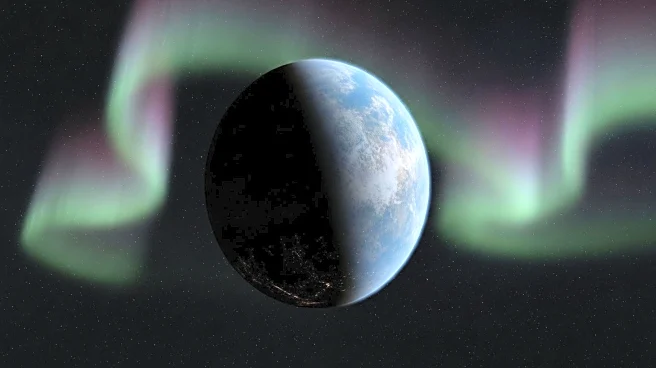What's Happening?
NASA's James Webb Space Telescope has provided groundbreaking observations of a circumplanetary disk around the exoplanet CT Cha b, located 625 light-years from Earth. This disk, rich in carbon-bearing molecules, is a potential site for moon formation. The discovery offers insights into the chemical and physical properties of planet and moon formation, with the disk containing molecules such as acetylene and benzene. The findings, published in The Astrophysical Journal Letters, highlight the rapid chemical evolution of the disk compared to the host star's disk, which lacks carbon.
Why It's Important?
The observation of a moon-forming disk around CT Cha b is significant for understanding the processes of planet and moon formation in the universe. Moons are believed to outnumber planets and may host life, making their formation crucial to the study of planetary systems. The Webb Telescope's data allows scientists to compare these processes to the formation of our solar system, enhancing our knowledge of how planets and moons develop. This research contributes to the broader understanding of planetary evolution and the potential for life beyond Earth.
What's Next?
Researchers plan to use the Webb Telescope to conduct a comprehensive survey of similar objects, aiming to understand the diversity of physical and chemical properties in disks around young planets. This ongoing research will help refine models of planet and moon formation, providing deeper insights into the conditions necessary for life. The study of circumplanetary disks will continue to inform the scientific community about the complexities of planetary systems and their potential for hosting life.
Beyond the Headlines
The discovery of a moon-forming disk around CT Cha b underscores the importance of advanced space telescopes in exploring the unknown aspects of planetary science. The presence of carbon-rich molecules in the disk suggests complex chemical interactions that differ from those in our solar system. This research highlights the role of cutting-edge technology in uncovering the mysteries of the universe, paving the way for future discoveries in the field of exoplanetary science.










